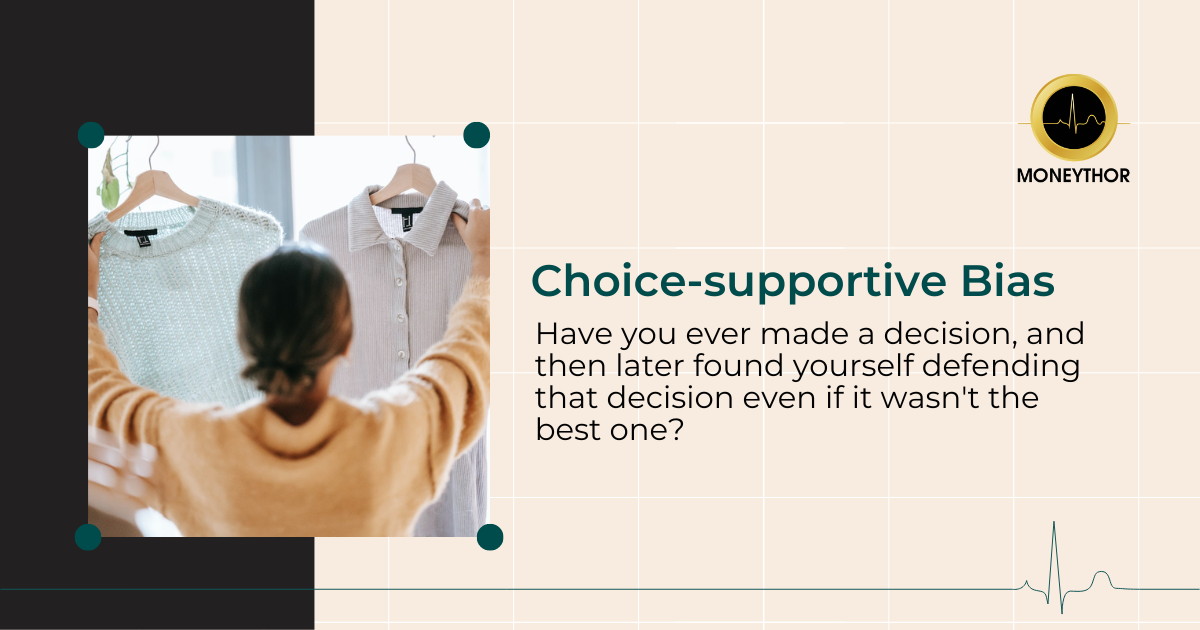Have you ever made a decision, and then later found yourself defending that decision even if it wasn’t the best one? Do you ever look back with rose-tinted glasses on situations that were less than ideal? That’s choice-supportive bias at play.
What is choice-supportive bias?
Choice-supportive bias is the tendency to justify past choices by selectively remembering the positive aspects of them and ignoring the negative ones. This bias can be a double-edged sword: while it can give us confidence in our choices, it can also prevent us from learning from mistakes and making better decisions in the future.
Why does choice-supportive bias happen?
Choice-supportive bias happens because our brains are wired to seek coherence in our beliefs and actions. When we make a choice, our brain wants to believe that it was the right one, so it selectively remembers the information that supports that belief. Additionally, admitting that we made a mistake can be difficult for our egos, so we tend to overlook the negative aspects of our choices in order to avoid feeling like we’ve made a bad decision (Thaler, 1985).
For example, a person may choose to keep a high-interest credit card with an annual fee because they believe it provides better rewards, despite evidence that a no-fee card with a lower interest rate might save them more money in the long run. They continue to support their decision to keep the high-interest card because they have already invested time and energy into the rewards program and feel a sense of loyalty to the brand.
How can choice-supportive bias be used to improve the financial wellbeing of customers?
While choice-supportive bias can seem like a bad thing, financial institutions can use this bias to encourage customers to make better financial decisions. One way they can do this is by highlighting the positive aspects of the choices that customers have made in the past, while also presenting alternative choices that may have been even better. For example, a bank might remind a customer that they made a good decision to start saving money, but also suggest that they could have saved even more by taking advantage of higher interest rates on certain accounts.
Another way to harness choice-supportive bias is by encouraging customers to reflect on their past choices and consider whether they align with their current financial goals. By prompting customers to think critically about their past decisions, banks can help them make more informed choices in the future (Simonson & Carmon, 1994). This process can be simplified by providing customers with a clear view of their expenses, budgets and goals within their digital banking channels. When customers can clearly see the decisions they have made and the impact that they have had on their financial plans, they will be able to learn and improve their financial situation.
Choice-supportive bias can be a powerful tool for financial institutions to help their customers achieve better financial outcomes. By understanding why and how this bias works, banks can design interventions that encourage customers to make better choices, without triggering defensive reactions. By leveraging the power of choice supportive bias, banks can help customers overcome the tendency to justify past decisions, and instead focus on making choices that align with their current financial goals (Johnson & Goldstein, 2003).
For more bitesize bits of behavioural science and other digital banking insights, sign up to our monthly newsletter…

